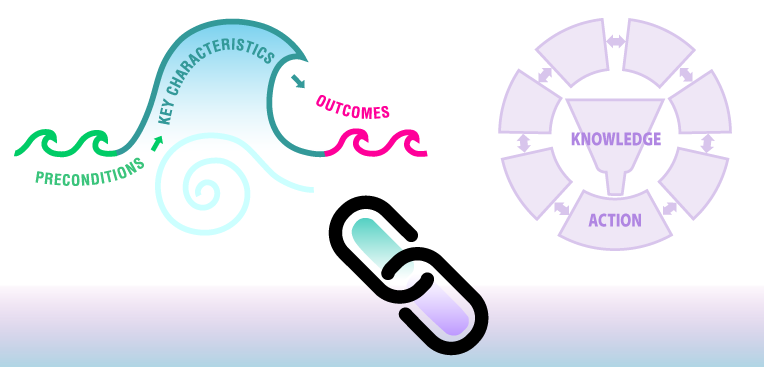

Linking this key characteristic to the other elements of the Social Movement Action Framework:
Each of the elements of the Social Movement Action (SMA) Framework is dynamic and interrelated. For example, strategic framing and reframing situates the shared concern or desired change, an urgent need for action, underlying causes and solutions. It seeks to engage people’s hearts and minds and build intrinsic motivation, increase public visibility and shape individual and collective action.
Linking this key characteristic to the action cycle phases of the Knowledge-to-Action Framework:
You and your change team’s capacity in social movement actions may be enhanced and/or accelerated by the addition of some of the action cycle phases of the Knowledge-to-Action (KTA) Framework, as the two frameworks are complementary. In addition to the linking example described earlier in this section, there can be many other points of connection between the two frameworks. Below are three more examples for your consideration.
- Identify the problem: Clearly identifying the problem using the KTA Framework can help you and your change team augment the narrative or message regarding the shared concern or desired change you are trying to tell. Identifying the problem, shared concern or desired change is the anchor for your narrative; you can connect this problem and its solution to the shared values and interests of your stakeholders, and make clear why change must happen.
- Adapt knowledge to local context: Consider assessing the local context, stakeholders and resources; this can provide a narrative that can strategically communicate and position the shared concern or desired change and the compelling need for change. You and your change team can use the results of your assessment to tailor the message that would resonate with your stakeholders' context. For example, you might choose to frame the same message, but adapt the communication style and the narratives you use to different settings and stakeholders if needed.
- Assess barriers and facilitators to knowledge use: In your message or narrative, you and your change team may also want to keep in mind some of the opportunities (or facilitators) and limitations (or barriers) that will ultimately determine the fate of your social movement. By being alive to these factors, you can leverage these opportunities to circumvent or minimize barriers. Remember, framing is a dynamic process that requires you to: position your issue; build credibility and commitment to the movement’s purpose; draw attention to concepts; and promote shared consciousness and support among your stakeholders.
For more discussion about the dynamic links between the elements of the SMA Framework to one another and to the KTA Framework, see the section "Accelerating your success with the Leading Change Toolkit™".
